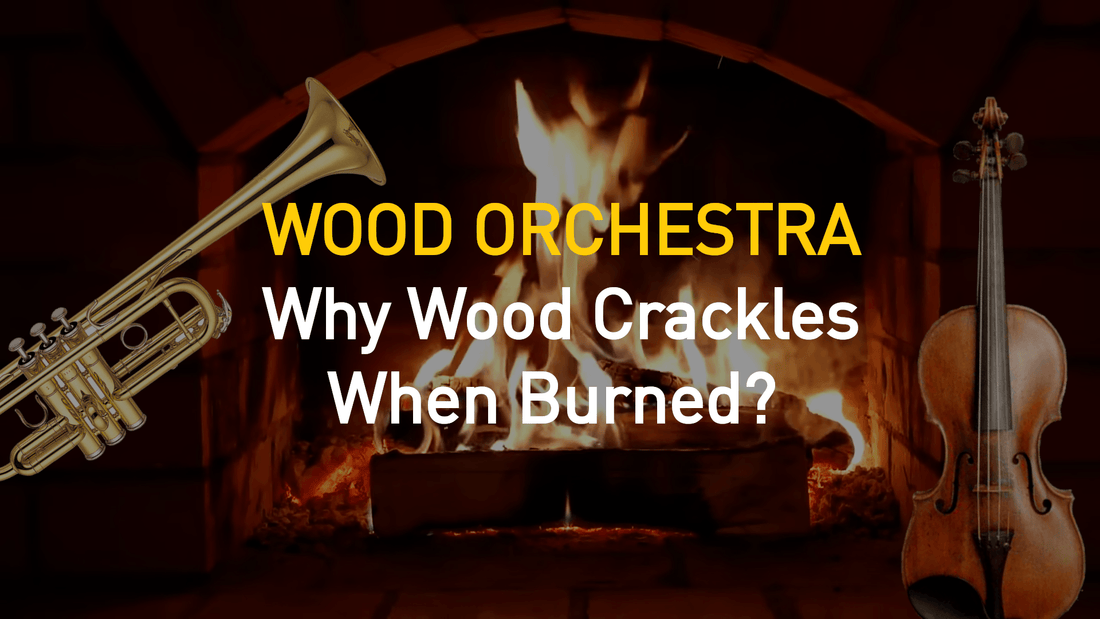
The Orchestra Inside Your Wood Burner: Why Does Fire Crackle?
It’s a perfect winter symphony. The flickering dance of the flames. The comforting warmth emanating from your burner. The relaxing glow engulfing your room. And, of course, the unmistakable, mesmerising crackle.
But exactly why does fire crackle? We’re sure that you have pondered this at least a few times in your life. And the time to answer this question is now.
In this article, our wood fuel experts will answer the age-old question: why does wood crackle in a fire?
You Might Also Like:
Why Does Fire Crackle: Escape of Trapped Moisture
The biggest reason why does wood crackle is due to trapped moisture. As the fire heats up your logs, this moisture starts to boil, raising the pressure inside the various pores and crevices inside the material. It is this vaporisation that produces the popping and crackling sounds most of us associate with natural fires.
The more moisture your logs contain, the more they will crackle. And as most experienced log burner users will know, moisture content is the most important determiner of wood fuel quality. If you don’t know why this is the case, read our blog post on the importance of wood moisture levels. But in short:
Improperly dried logs are inferior to properly dried logs because they:
- Smoke and smoulder when burned.
- Burn a lot less efficiently.
- Release a lot of particulate matter into the air.
- Produce cancerogenic creosote.
- Lead to rapid soot buildup inside your chimney.
As a result, the loudness and intensity of the crackling sound can actually be an indicator of wood fuel quality. Even high-quality kiln-dried logs contain at least 10% to 20% moisture, so you will still hear a slight crackle when burning them.
But hearing a constant, intense crackle may be cause for concern. This may mean that the logs you have bought logs are either: a) incompliant with Defra’s Ready to Burn quality standard or b) may have been stored improperly (and are thus not safe to burn).
This being said, listening to crackling sounds is by no means a substitute for using a wood moisture meter for controlling the quality of your wood fuels.
Wood Crackle Reason 2: Escape of Resinous Material
Another reason why does firewood crackle is the release of resinous materials. Many trees, especially those belonging to softwood tree species, contain a large amount of tree sap. As was the case with moisture, when the logs made from these trees burn, this sap gets heated and expands rapidly as it turns into vapour. And it is this rapid expansion that causes the popping or crackling noises you hear from your stove.
Wood Crackles Due to Air Pockets and Cellular Structure
According to our experts, another thing that makes wood logs crackle is its cellular structure. Being a natural material, wood often contains plenty of small air pockets. As the wood heats up, this air expands and, finding no other way to escape, it bursts out of the wood. This leads to ruptures in the wood and contributes to creating the familiar crackling sound we all know and low.
Fire Crackles Due to the Nature of the Fire Itself
To understand why does a fire crackle, it's also worth considering the nature of fire itself. What we call fire in our day-to-day lives is actually the exothermic chemical process of oxidation. This process is a dynamic, constantly changing entity.
As this process moves from one part of the log to another and consumes new material, it causes shifts and cracks in the wood, leading to popping sounds. Moreover, the initial lighting of a fire or adding new wood can lead to more pronounced crackling as the wood starts its combustion process.
Top 4 Reasons Why Wood Crackles
To summarize, these are the top 4 reasons why wood crackles in your stove:
- Moisture vaporises and escapes as temperatures increase.
- Escape of resinous material (especially in softwood logs).
- Gas expanding escaping from the pockets in the wood’s cellular structure.
- Oxidation occurs in different parts of your logs at different rates, leading to cracks.

